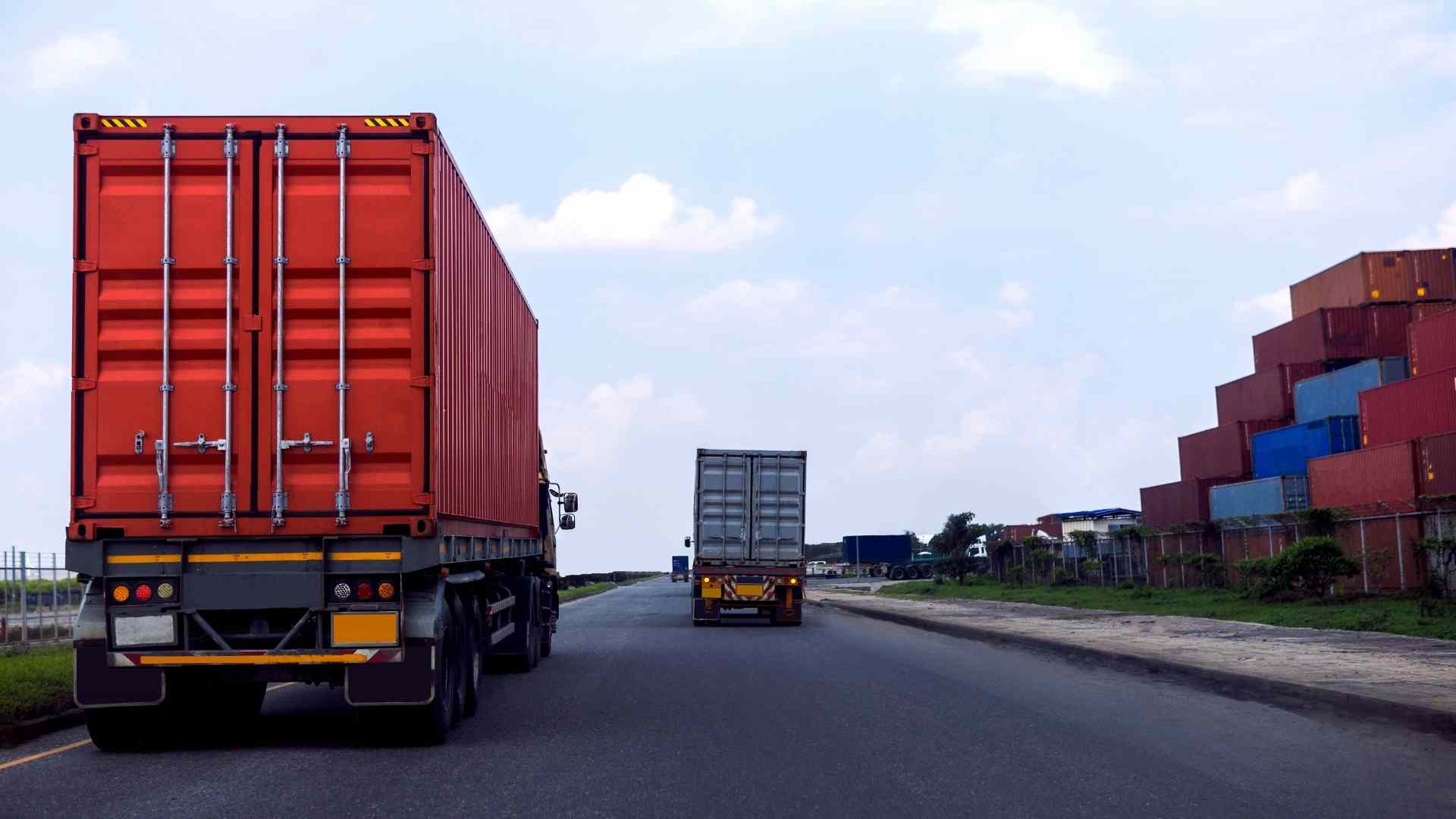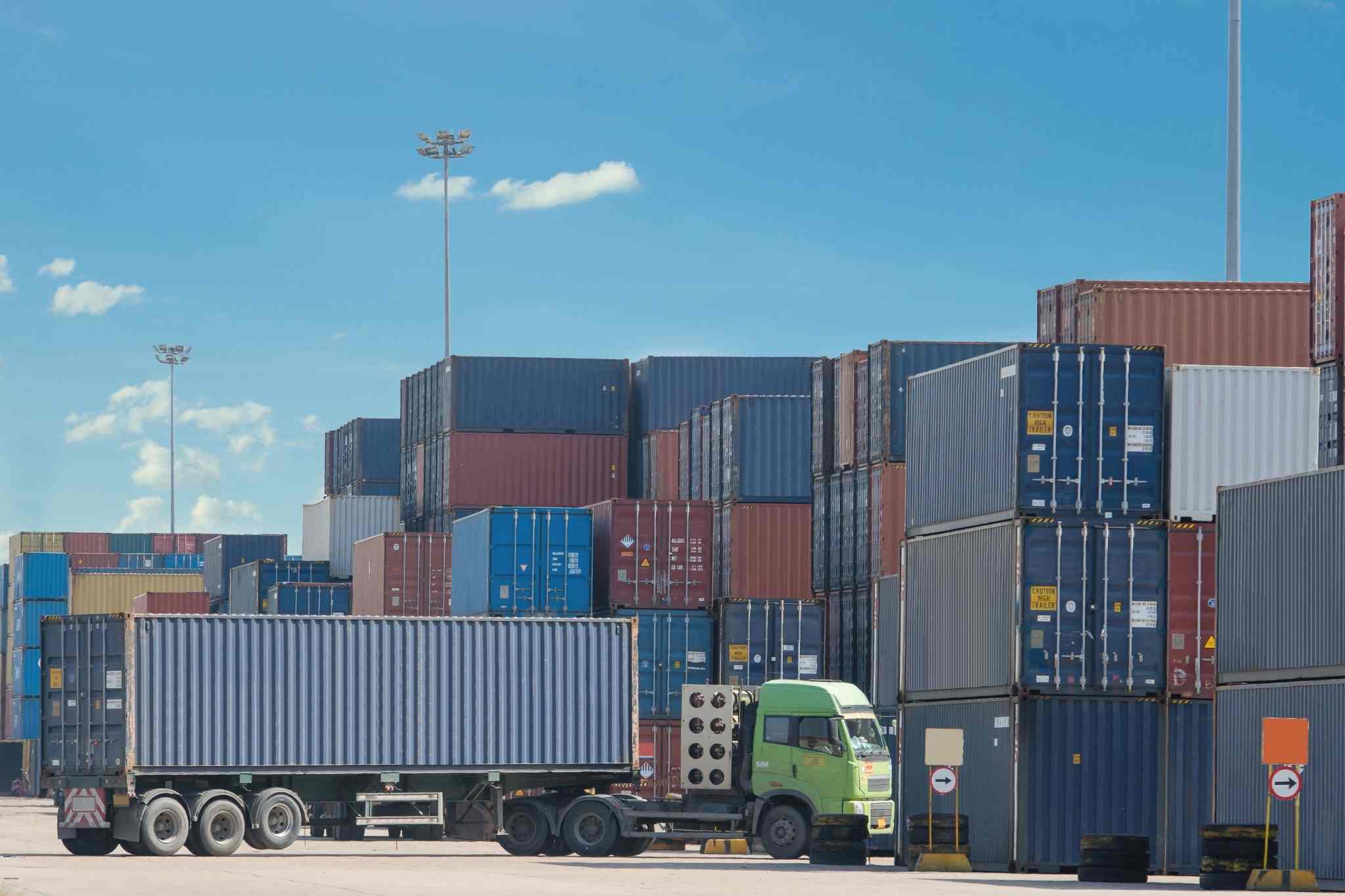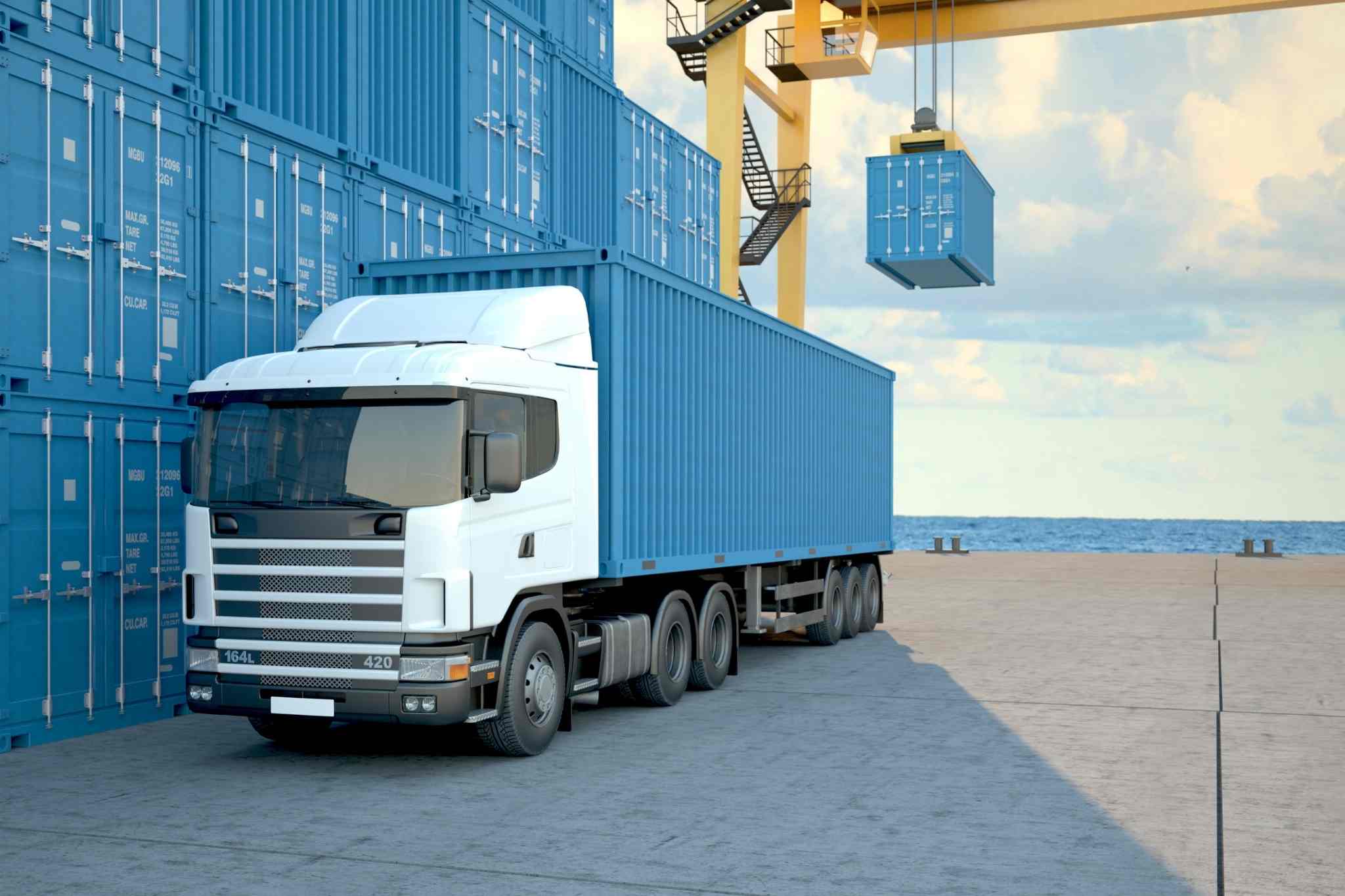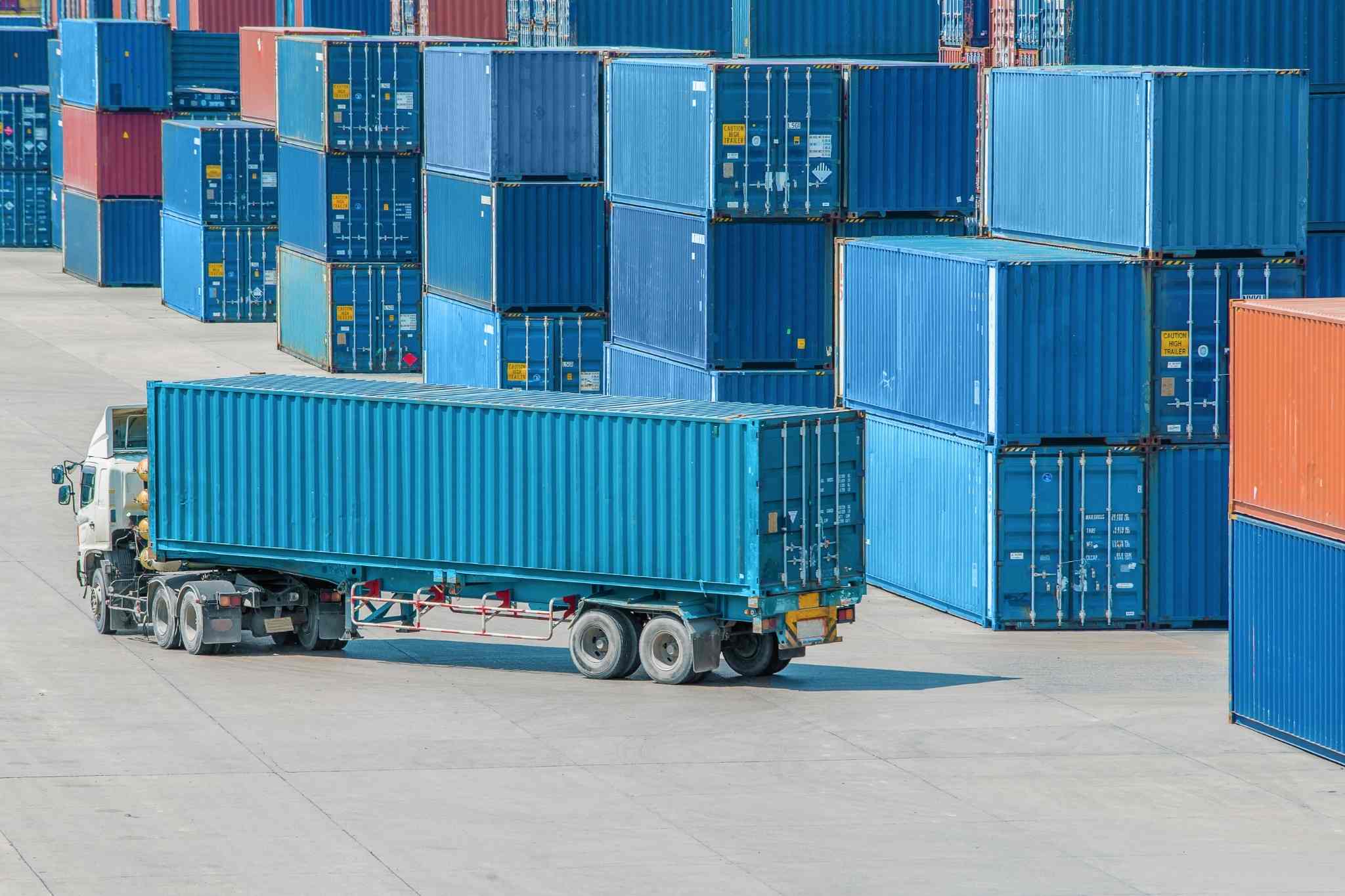Drayage trucking is a vital yet often overlooked component of modern freight logistics. It refers to the transport of containerized cargo over short distances, usually between ports, rail terminals, warehouses, and distribution centers. Drayage drivers are responsible for the first and last mile of many shipping journeys, making their role essential to keeping supply chains running smoothly.
For those curious about career paths in logistics, understanding what are drayage trucking jobs and how do they work can reveal opportunities with consistent local routes and competitive pay.
Table of Contents
Key Takeaways✔ Drayage trucking involves short-haul container transport, typically under 100 miles between ports, rail yards, and warehouses. ✔ Drayage serves as a crucial link in the supply chain, bridging larger transport modes like ships, trains, and trucks. ✔ Common duties include container pickup, urban delivery, and schedule coordination—all done locally, with drivers home daily. ✔ There are multiple drayage types, including port, intra-carrier, inter-carrier, expedited, and shuttle drayage. ✔ Drivers must hold a CDL Class A and TWIC card, plus possess skills in logistics tech, container handling, and communication. ✔ Jobs are widely available near the Port of New York and New Jersey, through job boards, company sites, recruiters, and industry networks. ✔ Company drivers in NYC can earn $1,200–$1,700 weekly, while owner-operators often exceed $3,000, based on load volume. ✔ Key pay factors include location, experience, route type, and equipment ownership, with incentives like bonuses and fuel surcharges enhancing income. |

What Are Drayage Trucking Jobs and How Do They Work?
To understand the logistics ecosystem, one must start by asking: what are drayage trucking jobs and how do they work? These roles involve transporting cargo containers over short distances—typically under 100 miles—between shipping hubs like ports, rail terminals, and warehouses. Drayage trucking is a vital link in intermodal transportation, ensuring freight can transition smoothly from ships or trains to final delivery networks.
Why Drayage Is Essential in Supply Chains
-
- Acts as the first or last mile in global freight transportation.
- Helps prevent congestion at ports by moving containers quickly to off-site facilities.
- Ensures timely transfers between transport modes to avoid delays in long-haul shipping.
Core Responsibilities of Drayage Truckers
-
- Pick up loaded or empty containers from shipping terminals.
- Secure and transport containers using chassis trailers.
- Navigate urban and industrial areas with precision and compliance.
- Coordinate with dispatchers and port systems to meet delivery schedules.
Drayage Trucking vs. Long-Haul Trucking
-
- Local Radius: Drayage typically operates within a metro area or regional port zone.
- Shift Patterns: Drivers are often home daily, appealing to those who prefer consistency.
- Equipment Focus: Specialized use of chassis, container locks, and port-specific gear.
Types of Drayage Operations
Each type of drayage job differs slightly in purpose and logistics:
-
- Port Drayage: Hauls containers directly to or from ocean ports. Common in high-traffic terminals like the Port of New York and New Jersey.
- Intra-Carrier Drayage: Moves cargo within the same shipping company’s network or property, such as from one terminal yard to another.
- Inter-Carrier Drayage: Transfers containers between different carriers or transport modes—e.g., from ship to train or ship to third-party warehouse.
- Expedited Drayage: Prioritized delivery of time-sensitive freight. Often used for goods under tight shipping windows.
- Shuttle Drayage: Relocates containers for temporary storage when final delivery sites are unavailable or backlogged.
Equipment Used in Drayage Jobs
-
- Container Chassis: A wheeled trailer designed to carry containers securely.
- Twist Locks: Mechanisms used to secure containers to the chassis.
- Tractor Units: Standard semi-trucks equipped for short-haul driving.
Common Industries That Rely on Drayage
-
- Retail and E-commerce: For inbound goods that require quick restocking.
- Manufacturing: For just-in-time delivery of components.
- Food and Beverage: For perishables needing fast transit from ports to distribution centers.
- Automotive: For imported parts or vehicles.
Day in the Life of a Drayage Trucker
A drayage trucker’s workday is shaped by tight schedules, port procedures, and real-time logistics. To fully understand what are drayage trucking jobs and how do they work, it’s helpful to look at the tasks, responsibilities, and challenges that drivers face from morning to night. This daily workflow highlights the practical side of what are drayage trucking jobs and how do they work.
Typical Start to the Day
-
- Early Morning Dispatch Login: Drivers often begin their shift by checking their assigned jobs via electronic dispatch or port scheduling systems. This includes appointment times, container pickup details, and destination instructions.
- Pre-Trip Inspection: Before leaving the yard, the trucker performs a thorough safety check of the rig and chassis, ensuring brakes, tires, lights, twist locks, and load-securement systems are in working condition.
- Paperwork and Load Matching: Drivers review shipping documentation to match container numbers, confirm port terminal locations, and understand any special handling requirements for the cargo.
Terminal Pickup Procedures
-
- Queueing at the Port Gate: Upon arrival at the port, drivers enter virtual or physical queues. Wait times vary depending on port congestion, vessel schedules, and staffing levels.
- Container Retrieval: Terminal staff load containers onto chassis while the driver oversees proper placement and securement. This process requires precision and clear communication.
- Compliance Checks: Drivers may undergo random inspections to ensure DOT compliance, TWIC authorization, and proper paperwork handling before exiting the terminal.
Midday Delivery Workflow
-
- Navigating Urban Routes: After pickup, the driver must navigate busy streets, industrial zones, or bridges to reach the delivery site. Awareness of restricted routes, low clearances, and traffic flow is essential.
- Drop-Off or Intermodal Transfer: The container is either delivered to a final customer or transferred to another mode (e.g., rail). Some deliveries involve appointments, security checks, or live unloading.
- Repeat Assignments: On busy days, drivers may complete two or more container moves, especially when operating in close proximity to the port or within container yards.
End-of-Day Wrap-Up
-
- Empty Container Return: Drivers may be required to return empty containers to designated depots, depending on the shipper’s instructions or equipment shortages.
- Post-Trip Inspection: The day concludes with a post-trip inspection to report any mechanical issues and submit electronic logs.
- Home Time: One major appeal of this role—and why many search where can I find local drayage trucking jobs near me in New York City—is that drayage drivers typically return home at night.
Critical Skills Used Throughout the Day
-
- Time Management: Strict appointment windows mean drivers must plan routes and buffer time for port delays.
- Technical Know-How: Familiarity with dispatch software, ELDs, and container handling equipment is a must.
- Problem Solving: When ports experience delays or customers reschedule, truckers must adapt on the fly without disrupting workflow.
Daily Challenges and Realities
-
- Unpredictable Delays: Even a well-planned day can be derailed by terminal backups, weather issues, or unavailable equipment.
- Regulatory Navigation: Ports and cities often have unique regulations, including emissions standards and restricted delivery zones.

Required Licenses, Skills, and Certifications
To become a drayage trucker, meeting both legal and operational qualifications is essential. Understanding the technical and interpersonal requirements provides a complete picture of what are drayage trucking jobs and how do they work. Meeting these standards ensures smooth and reliable cargo movement from port to destination.
Licenses and Credentials
-
- Commercial Driver’s License (CDL), Class A: Required to operate tractor-trailers, including those carrying intermodal container chassis. A Class A license ensures the driver can legally haul heavy loads across state lines.
- TWIC (Transportation Worker Identification Credential): Necessary for gaining access to secure port facilities. This federally issued ID involves a background check and is mandatory for most drayage positions involving maritime terminals.
- Medical Examiner’s Certificate: Confirms that the driver meets physical fitness requirements for commercial vehicle operation. Most employers require this as part of DOT compliance.
Technical Knowledge and Skills
-
- Intermodal Equipment Familiarity: Includes understanding how to safely operate and inspect container chassis, twist-lock systems, sliding tandem axles, and seals and container doors
- Electronic Logging Devices (ELDs): Drayage truckers must accurately record hours of service using ELDs. Familiarity with these systems helps maintain compliance with federal driving limits.
- Dispatch Software Proficiency: Many carriers use digital load boards or proprietary systems to assign and track hauls. Knowing how to operate these platforms improves efficiency and communication.
- Hazmat Endorsement (Optional but Beneficial): While not always required, having a hazardous materials endorsement expands job opportunities, especially when hauling containers with regulated cargo.
Physical and Safety Capabilities
-
- Pre-Trip and Post-Trip Inspections: Drivers must conduct visual and hands-on inspections of tires, lights, brakes, connections, and safety devices before and after every shift.
- Load Securement Skills: Even though most container cargo is sealed, truckers must ensure the container is correctly locked to the chassis and all equipment is road-ready.
- Weather and Terrain Readiness: Ability to adapt to rain, snow, and tight urban roads is important, especially when operating in coastal cities like New York.
Soft Skills That Enhance Job Performance
-
- Clear Communication: Essential when dealing with dispatchers, port staff, and warehouse personnel. Miscommunication can result in delays or missed appointments.
- Time Awareness: Port terminals often assign strict appointment windows. Punctuality and route planning are vital to avoid fines or rescheduling penalties.
- Attention to Detail: Drivers must carefully check container IDs, verify load instructions, and ensure compliance with documentation protocols.
- Problem Solving Under Pressure: Delays, unexpected reroutes, or mechanical issues require quick thinking and calm decision-making.
Where Can I Find Local Drayage Trucking Jobs Near Me in New York City?
New York City is home to one of the largest and busiest shipping gateways in the country. The nearby Port of New York and New Jersey handles millions of containers annually, creating a consistent demand for short-haul CDL drivers.
For drivers constantly wondering, where can I find local drayage trucking jobs near me in New York City, the key is persistence and visibility. Networking, regular site visits, and prompt applications increase the likelihood of securing a high-paying role.
Online Job Boards
- CDLjobs.com, TruckersReport, and FleetJobs: These platforms allow job seekers to filter by location, haul type, and equipment. Drayage-specific roles are frequently posted due to port growth.
- Indeed and ZipRecruiter: Though broader in scope, these platforms also list verified openings from logistics companies hiring for container transport.
Company Career Pages
- Leading drayage providers with dedicated terminals in the NY/NJ area frequently post new driver positions on their websites.
- Third-Party Logistics Providers (3PLs) often subcontract drayage work and maintain hiring portals for local drivers.
Industry Networking Groups
- LinkedIn Job Listings and Trucking Forums: Local freight groups often highlight real-time openings, event invites, and insider updates on terminal activity.
- Facebook CDL Groups: Many drivers find referrals and leads through community posts and job-sharing within private regional groups.
Port Authority and Government Portals
- Port Authority of New York and New Jersey: Offers official listings and contractor directories where CDL drivers can identify hiring companies that operate within port zones.
- Municipal Freight Employment Boards: Local economic development agencies may partner with logistics firms to advertise open positions to certified CDL drivers.
How Much Do Drayage Trucking Jobs Pay on Average?
Another frequent question among trucking professionals is: how much do drayage trucking jobs pay on average. Compensation varies based on multiple variables, including geography, experience, and ownership status.
How much do drayage trucking jobs pay on average? It depends heavily on driver status (company vs. owner), work ethic, and geographic location. Those operating out of New York City typically benefit from high container volume and premium compensation structures.
For anyone evaluating career paths or contracts, understanding what are drayage trucking jobs and how do they work is essential to making informed financial decisions.
National Salary Averages
- Company drivers make $42,770 annually. Most company-employed drivers operate fleet-owned trucks and earn weekly wages or hourly rates.
- Owner-Operators earn around $228,500 annually. Drivers using their own rigs command higher gross income but must account for fuel, maintenance, and insurance expenses.
Regional Earnings in New York City
Company Drivers
- Average annual income of $119,494
- Higher pay for night, weekend, and port-priority shifts
- Opportunities for overtime and safety bonuses
Owner-Operators
- Average weekly income is $5,998, depending on load volume
- Port surcharges and chassis rentals impact net earnings
- Dedicated lanes and terminal contracts improve consistency
Key Factors That Influence Pay
- Location and Port Activity: Busy terminals offer more work, but may come with congestion-related delays. Urban drayage jobs pay more due to cost of living and traffic complexity
- Load Volume and Turn Rate: More container runs per day = more income. Experienced drivers optimize their schedule for 2–3 turns daily.
- Work Schedule: Off-hour or overnight routes often include shift differentials. Weekend or holiday hauls may offer bonus pay
- Equipment Ownership: Owner-operators earn higher gross pay but bear all truck-related costs. Some carriers provide leased equipment with partial reimbursement
- Driver Experience: Veteran drivers may receive higher base pay, steady routes, and referral bonuses. New drivers may start with lower rates but advance quickly in high-demand markets

Frequently Asked Questions (FAQs)
What is a drayage trucker?
A drayage trucker is a commercial driver who transports shipping containers over short distances, typically between ports, rail yards, and warehouses. These drivers play a key role in moving cargo efficiently during the first or last leg of a supply chain journey. Unlike long-haul drivers, drayage truckers usually stay local and return home daily.
What is a drayage operator?
A drayage operator is either a company or an independent driver responsible for managing and executing container transport near ports and terminals. They ensure that cargo is picked up, delivered, and transferred safely between transport modes. Many drayage operators specialize in port logistics and must comply with strict scheduling and regulatory requirements.
What is the difference between OTR and drayage?
OTR (Over-the-Road) trucking involves long-distance freight transportation across states or regions. Drayage, on the other hand, focuses on short-haul container movements near ports or terminals. OTR drivers often spend days or weeks on the road, while drayage drivers operate locally and return home daily.
What is a drayage fee?
A drayage fee is the charge applied for moving freight containers short distances, typically within a port region or between nearby logistics hubs. It covers fuel, labor, equipment, and terminal costs associated with container transport. These fees are commonly included in shipping invoices for intermodal freight services.
What are the benefits of drayage?
Drayage helps prevent port congestion by moving containers quickly to off-site facilities or rail terminals. It enables faster, more efficient transitions between transportation modes. For drivers, drayage offers regular local work and more predictable schedules compared to long-haul routes.
Ready to Move Freight in NYC? Partner with Drayage Company By Best!
For businesses and drivers in New York City seeking dependable drayage services, Drayage Company By Best stands out as a trusted partner. With a strong presence in NYC, Drayage Company By Best offers tailored solutions to meet your logistics needs. Whether you’re navigating the complexities of port logistics or require efficient intermodal transport, we have the expertise to streamline your operations.
Operating extensively in New York City, Drayage Company By Best ensures timely and reliable container movements across the region. Our commitment to excellence makes Drayage Company By Best a go-to choice for businesses aiming for seamless supply chain integration.
Contact Drayage Company By Best today to discuss how our services can benefit your operations in New York City!

